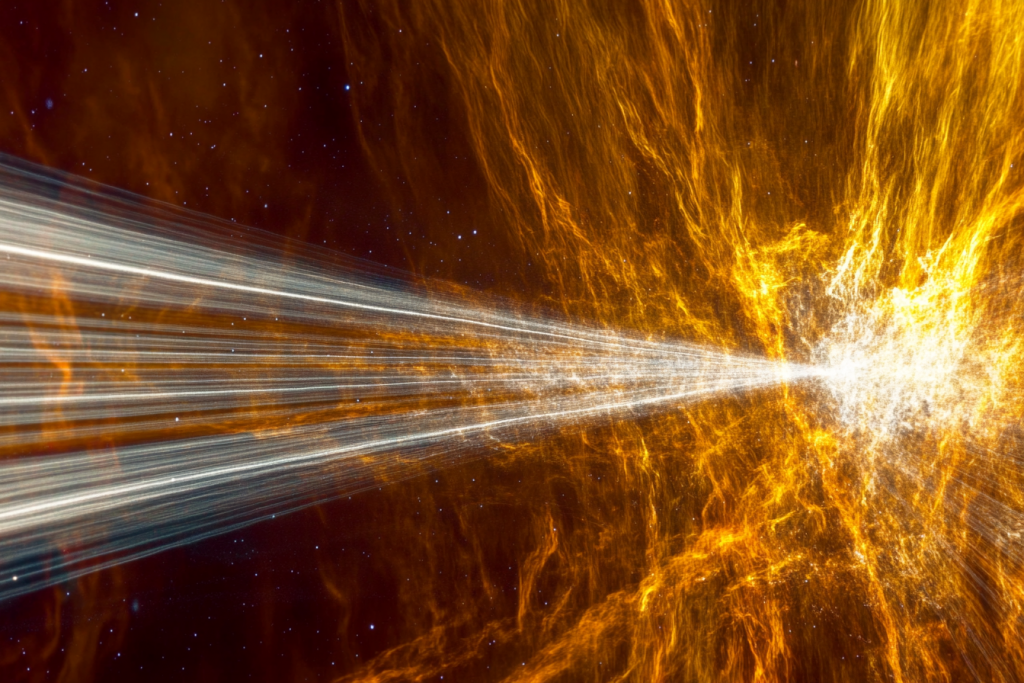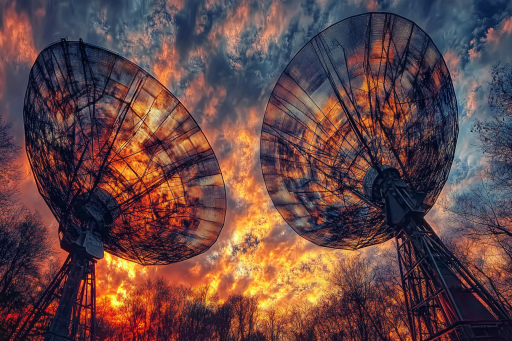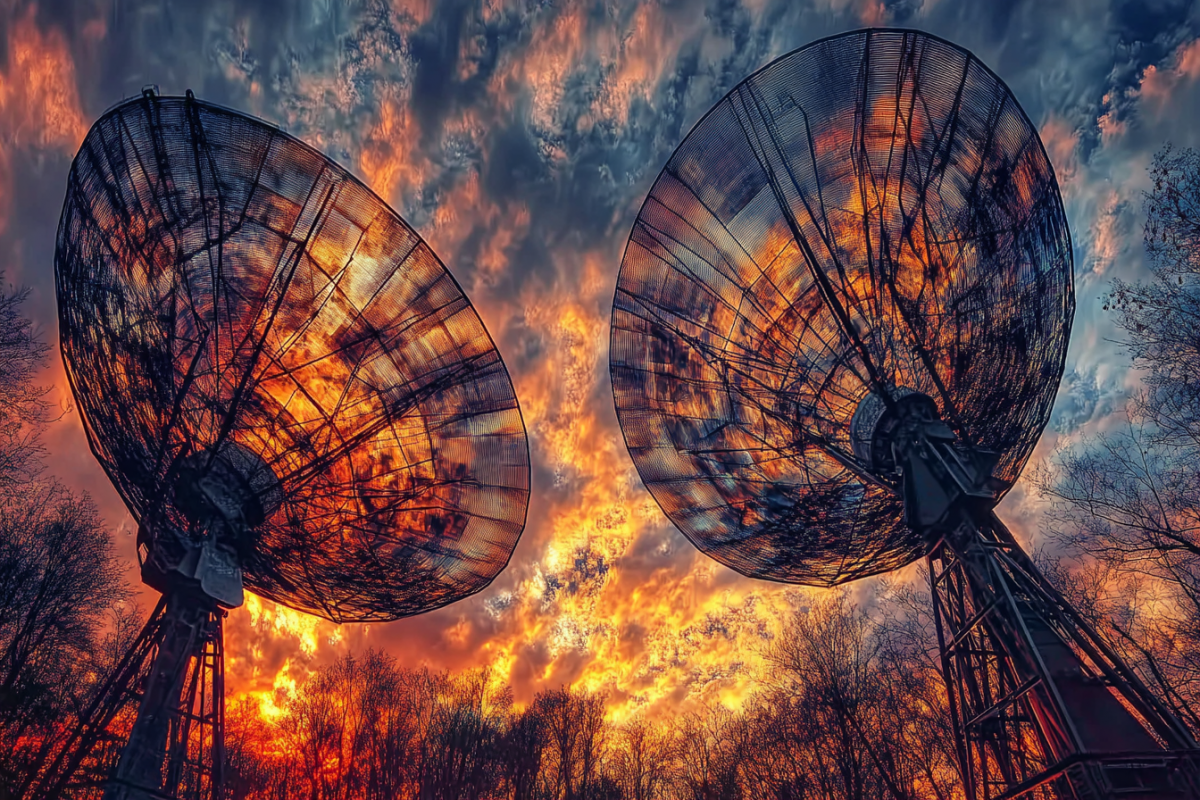
The universe is filled with noise—stars exploding, black holes colliding, and galaxies spinning. But occasionally, something cuts through the cosmic static: a signal that defies every known explanation. These mysterious transmissions, bursts, and patterns have puzzled scientists for decades, hinting at phenomena beyond our understanding. Are they natural anomalies… or something more intentional?
The WOW! Signal

In 1977, a powerful narrowband radio signal was detected by the Big Ear radio telescope in Ohio. It was so striking that the astronomer who spotted it circled the printout and wrote “WOW!” beside it. The signal lasted 72 seconds and has never been detected again. Despite decades of analysis, its source remains unknown, and theories range from comets to extraterrestrial contact.
Fast Radio Bursts (FRBs)

FRBs are millisecond-long pulses of high-energy radio waves originating from far outside our galaxy. Some are one-off events, while others mysteriously repeat—yet their exact cause remains elusive. Theories include neutron star collisions, magnetars, or even advanced alien technology. Scientists have only recently begun to locate their origins, but answers remain frustratingly out of reach.
The Lorimer Burst

Discovered in 2007, the Lorimer Burst was the first FRB ever recorded, catching astronomers completely off guard. It came from billions of light-years away and carried more energy than the Sun emits in days. Its brief, intense nature sparked a flurry of theories—but no clear explanation has ever been agreed upon. It was a signal that changed how we listen to the cosmos.
The Green Bank Anomaly

In 2010, astronomers at the Green Bank Telescope in West Virginia detected an unusual, sustained radio emission that didn’t match any known natural or manmade source. Unlike traditional signals, it didn’t fit into patterns like pulsars or satellite interference. Some believe it was a rare celestial phenomenon; others wonder if it was a missed message. The source vanished as quickly as it appeared.
KIC 8462852’s Flickering Light

Also known as Tabby’s Star, KIC 8462852 baffled scientists when its light dimmed dramatically and unpredictably. This wasn’t the regular flicker of a planet passing in front—it was chaotic and extreme. Some suggested massive space dust clouds; others proposed a Dyson Sphere, a theoretical megastructure built by advanced civilizations. Years later, no definitive cause has been found.
The Perseus Cluster Sound

Astronomers discovered a strange “sound” emanating from the Perseus galaxy cluster—a low-frequency wave converted to audible tones. These waves suggest something massive is vibrating space itself, creating a deep, eerie cosmic hum. It’s not a signal in the traditional sense, but it’s an anomaly we can’t yet explain. What’s creating these immense ripples through the void?
Repeating Signal from Galaxy 1.5 Billion Light Years Away

In 2019, scientists observed a repeating radio signal from a distant galaxy that pulsed every 16.35 days—a precise rhythm unlike anything seen before. Natural space phenomena usually lack such regularity. Could this be the signature of some cosmic clock… or a deliberate broadcast? Its rhythmic mystery continues to provoke wild speculation and rigorous study.
The S5-HVS1 Speeding Star Signal

In 2019, a star named S5-HVS1 was observed moving through space at over 3.7 million mph, likely ejected from the Milky Way’s center. Its strange trajectory and velocity made it stand out—and it left behind a faint, puzzling radio signature. Could a supermassive black hole interaction have sent this star—and its strange signal—hurtling into intergalactic space?
The Alien Beacon Hypothesis of HD 164595

A brief, strong radio signal detected in 2016 from the direction of star HD 164595 caused a stir in the SETI (Search for Extraterrestrial Intelligence) community. The signal seemed unusually focused and powerful, leading some to speculate it could be an intentional beacon. Though no repeats have been found, and natural explanations were proposed, no consensus was reached.
X-Ray Signal from Galaxy Cluster Abell 1689

NASA’s Chandra X-ray Observatory detected a strange, unidentified X-ray emission coming from the massive galaxy cluster Abell 1689. Some believe the emission could be from dark matter decay—an event that would revolutionize physics. Others think it’s a completely new phenomenon we don’t yet understand. Whatever its cause, it doesn’t behave like anything we’ve seen before.
The Enigmatic Beacon from Proxima Centauri

In 2020, a narrowband radio signal was detected from Proxima Centauri, our closest neighboring star. The signal appeared once and then vanished, never to be heard again. What made it special was its frequency and how it seemed to fit no known source. Though most scientists caution it’s likely an Earth-based anomaly, the possibility of an intentional signal from a nearby system hasn’t been ruled out.
Echoes from the Unknown

Each of these signals adds to a growing list of cosmic puzzles that challenge our understanding of the universe. They may be echoes of strange physics, misidentified celestial events—or something entirely unexpected. As our tools improve, so too does our ability to listen, and yet the answers often remain just out of reach. Perhaps these messages aren’t meant for us… or maybe we’re not ready to understand them.





